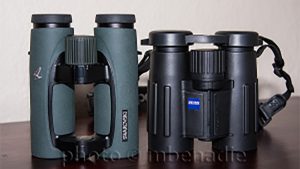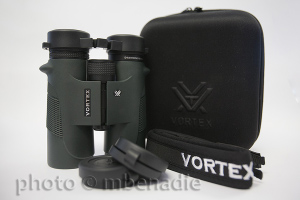Go to All Blogs | Birding Blogs | All our Birding Tours
Every naturalist using binoculars has an opinion on magnification, and there is never a shortage of advice as to what constitutes the best magnification for safari goers and on a birding tour. Yet magnification is not the only prerequisite of good birding binoculars – let’s not forget the importance of objective and related features in our decision making process!
Historically, when it comes to binoculars, I have been a supporter of 10X42 optics, and I always thought that 10x was the best “one bin fits all” and the magnification of choice for observing distant wildlife subjects or soaring raptors. As a guide the last thing I wanted when peering at a distant bird was to say ‘I don’t know what it is’! When I started birding, 10-power was indeed seen as the magnification of choice by ‘experts’.
Then circumstance conspired to lay the latest exquisitely-crafted 8-power Swarovskis in my hands, and I have been the proud owners of the Swarovski EL 8X32 SV for a while now. In short, the compact size of the Swarovison 32 range soon had me leaving my bulky 10-powers at home!
Using these new 8X32s, I thought I would sacrifice some light-gathering power due to smaller objective and image magnification (going from 10- to 8-power) for a lighter pair of binoculars in the field, but I was wrong. I could still ID (or identify) soaring eagles with ease – it did everything a 10x was supposed to do better, and was much lighter (20.5 ounces) and a far more compact design! The very wide, class-leading field of view is another plus, as is the nice rubber armouring with thumb indentations for comfortable holding.

So what does one consider when choosing the best binoculars for a birding tour? Terms that get me excited include close focus (for insects and butterflies), nitrogen-purged (so they don’t fog up on cold mornings or in humid conditions), fluorite coating, high eye relief and roof-prism design (as opposed to the more bulky porro-prism design). Being fairly compact and easy to travel with is another consideration. Most modern binoculars by Swarovski, Leica and Zeiss (what I like to call the ‘Big 3’) set the standards in this regard and have all the right attributes.
Generally, choose binoculars with a magnification of 7, 8 or 10. Basically, the higher the magnification, the narrower the field of view. One also needs to remember that 10-power binoculars, while magnifying a subject more, also give you a narrower field of view, so it can be harder to find the subject through the higher-power optics. 8-power is thus often a good choice for bird watching, particularly in forest conditions.
The second number on the binoculars (24, 32, 42, 50) is the diameter in millimetres of the objective lens. A general recommendation for birding has always been to choose a 42mm diameter. The 32mm EL Swarovison binoculars are, however, even better than most average 42 binoculars – they are that good! The lenses are HD fluorite glass and the optics include the Swarovsion ‘field flattener’ technology that gives unsurpassed image-edge sharpness and distortion-free viewing. The HD glass gives excellent light and colour transmission, so the subjects you are seeing in whatever light conditions are portrayed in true colours.
Eye relief and field of view are two additional important considerations in choice of binoculars. The Swarovski EL 32 range has an eye relief of 20mm, making it comfortable binoculars to use, especially if you bird with glasses. The minimum accepted norm these days is an eye relief of 16mm, so the EL 32 exceeds this by quite a margin. The field of view on the 8×32 EL Swarovision is 423 feet, the largest field of view on roof prism binoculars that Swarovski has ever done at the date of this blog.
Another great plus of an 8X32 objective is that it is less to lug around if you are also into bird photography and carry a camera and lens while out on a photo birding tour.
While I personally use Swarovski, there are, however, other manufacturers that also make some super optics today. Strong contenders include the Leica Ultravids HD-Plus, the Zeiss Victory and Conquest lines, as well as the up-and-coming Vortex binoculars (particularly the Viper HD, Razor HD and Talon HD).
-Martin Benadie-

